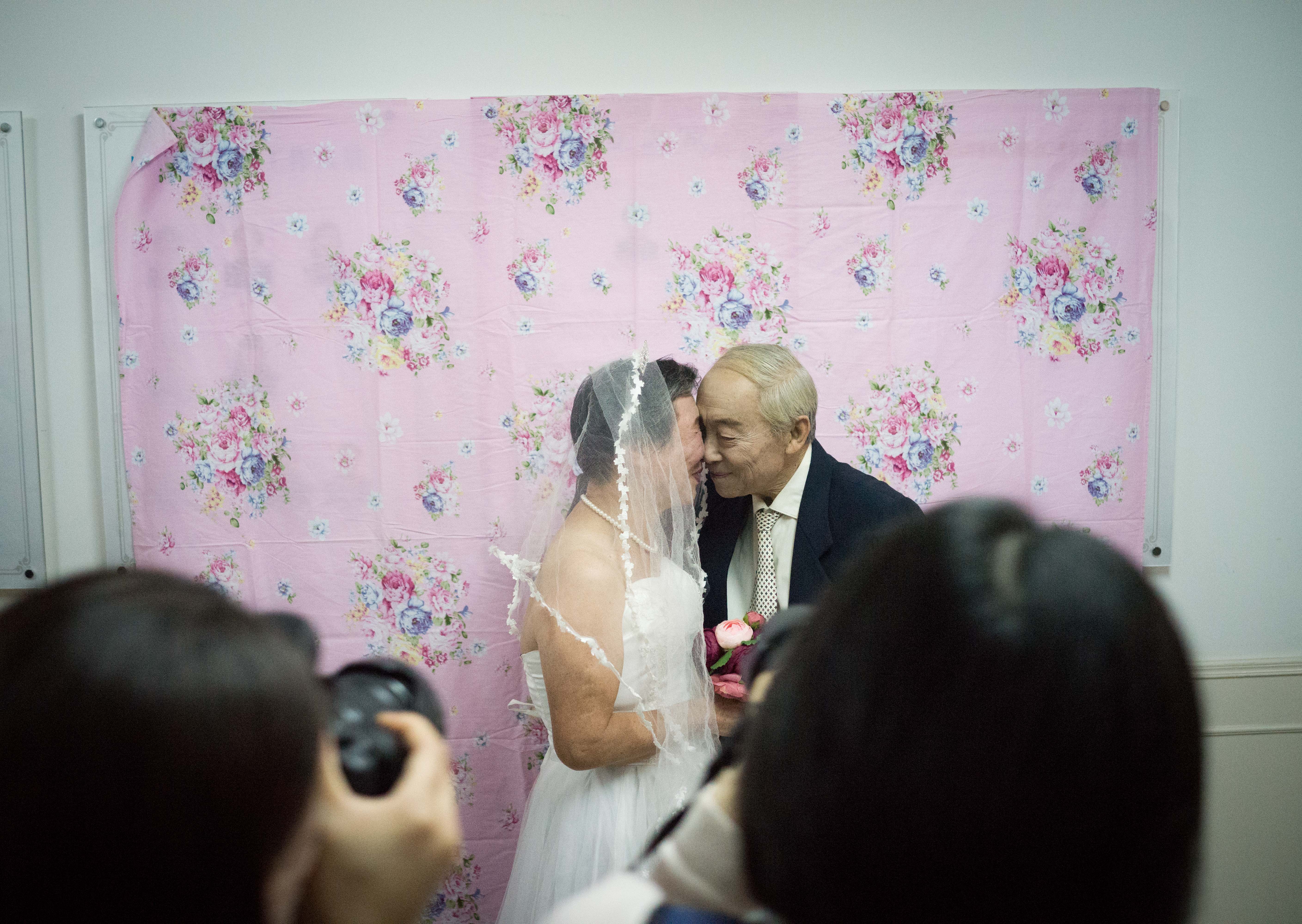
In one room, a forest of concrete tree trunks and plastic leaves gives way to a hidden door that opens to a European-style hallway. In another room, the sky is filled with artificial moon-glow and stars. In yet another room, there’s a beach with a vivid blue-sky backdrop and fake coconut trees.
These sets are not part of Hollywood magic. They’re the background for dream wedding photos at a studio in Shanghai, China.
“China Love,” a documentary by Australian filmmaker and photographer Olivia Martin-McGuire explores this fantasy-making trend in China, the pre-wedding photoshoot. Martin-McGuire lived in Shanghai for four years. The documentary has been screened in Australia, Guangdong, China and New York City.
When Martin-McGuire first moved to China, she noticed that young couples would spend a good amount of money and energy to take pre-wedding photos before their actual weddings.
These shoots involve several costume and backdrop changes and range from $300 to as much as $400,000 USD. Some couples will travel abroad to Europe, the United States or other locations to capture the photos in exotic backdrops or with iconic landmarks in the background — even if they’ve never lived or visited there before. Less well-off couples go to local studios to pose in lavishly decorated rooms.
Martin-McGuire wanted to know why people took these unrealistic photos, and why this event was so important to the couples in China today.
I’ve taken part in this trend. Last summer, I photographed Hairong Cao, a 2015 graduate of the University of Washington. She flew back from Shanghai to Seattle with her fiance (now her husband) for their photoshoot.
For their trip to Seattle, they carried six suitcases, and the flight took nearly 20 hours.
For her, the importance of the pre-wedding photoshoot was where to take it and who she took these photos with. One of her top priorities was to get photos in the Suzzallo Library. Hairong said she had planned for taking her pre-wedding photos there since she was a student.
“The big windows of the library in this photo always reminds me of the old days, when I studied so late in that library and dreamed so big for my future. And now, my dream planted at that time is becoming true,” she said. “Going back to Seattle, where I laughed, cried and grown, to take my wedding photos means a lot to me.”
In the picture, Hairong dressed in a pinkish puffy wedding dress, and the groom is by her side as they walk up from the spiral staircase of the Suzzallo Library.
Now, the photo hangs on the wall in her bedroom.

Martin-McGuire says the wedding photo industry in China today is worth $80 billion dollars and continues to grow. The so-called godfather of wedding photos is Jiahao Allen Shi. He opened a chain of wedding photo studios called Artiz, which has 300 stores in seven different countries.
“You literally could be anything you want,” Allen Shi’s personal assistant said. Whether a bride wants to be a princess in a forest or a celebrity in a European castle, her dreams can be delivered in their studios.
Through this industry, Allen Shi rose from poverty and made himself a billionaire in eight years. He plans to expand his business into American market.

Despite the modern popularity and profitability of the pre-wedding photoshoot, Martin-McGuire found a historical connection behind this phenomenon.
She filmed older couples celebrating their wedding anniversaries with a wedding photo shoot offered by a community charity group. The elders said that, these fancy wedding photos were unthinkable for them 50 years ago, when they were married in the midst of the Cultural Revolution.
During that time, colorful clothing, entertainment, and any form of individuality was perceived as capitalism and were banned. A simple black-and-white photo with the two people together had to be enough for couples back then.
“China Love” argues that the culture of pre-wedding photoshoot was not only a consequence of China’s booming economy, but also a sign of the nation healing from its historical trauma. And, the wedding shoots also display the growing power of the people in pursuing their own happiness.

Martin-McGuire’s film also touches on other marriage-related social phenomena in current Chinese society, including the “marriage market” in Shanghai People’s Park, the expectation that marriageable men own property, and the sentiment of families “giving-away” their daughters.
During this fast-growing period for China, the nation is struggling with the old traditions while also breeding powerful hopes for the future. Photography is one of the ways people use to express such hope. This expression finds itself not only in pre-wedding photos, but also all other kinds of photography. Personal photoshoots, family photos and pet photography are all highly demanded in China today.
In “China Love,” one bride named Viona told Martin-McGuire the pre-wedding photo shoots are “the only time they (married couples) were that close to their dreams. After the wedding photos, they were done. They [were backed] to reality. They would wash the rice and do all the cleanings. That’s it.”
The photos captures a dream for these young couples: to be wealthy and happy even just for a moment. But more importantly, the photos mark the official beginning of their lives in marriage together.

